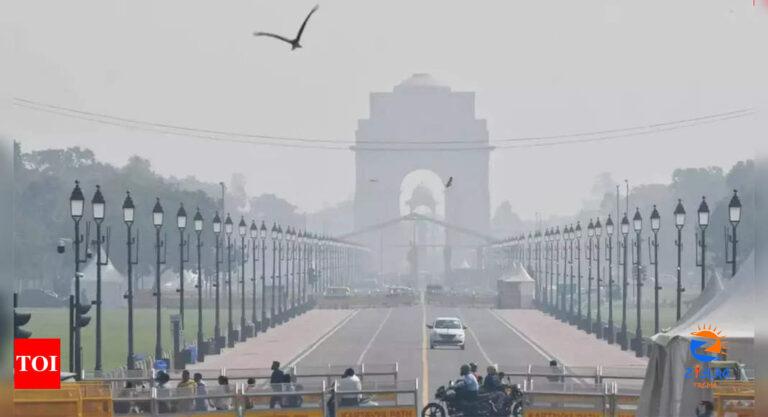
[ad_1]
NEW DELHI: Exposure to polluted air is associated with an increased risk of type-2 diabetes, according to a first study of its kind in India published in the BMJ Open Diabetes Research and Care journal. The study conducted in Delhi and Chennai found that inhaling air with high amounts of fine pollution particles (PM2.5) — 30 times thinner than a strand of hair — led to high blood sugar levels and increased type-2 diabetes incidence.
Exposure to fine particulate matter has been associated with several cardiovascular and cardiometabolic diseases, the researchers said.
However, such evidence mostly originates from low-pollution settings or cross-sectional studies, thus necessitating evidence from regions with high air pollution levels, such as India, where the burden of non-communicable diseases is high, they said.
The team, including researchers from the Centre for Chronic Disease Control, New Delhi, assessed a group of over 12,000 men and women from 2010 to 2017 and measured their blood sugar levels periodically.
They also used satellite data and air pollution exposure models to determine the air pollution in the locality of each participant during that time.
The study showed that one month of exposure to PM2.5 led to increased levels of blood sugar and prolonged exposure of one year or more led to higher risk of diabetes.
It also found that for every 10 micrograms per cubic metre (μg/m3) increase in annual average PM2.5 level in the two cities, the risk for diabetes increased by 22 per cent.
There exists a major research gap due to the lack of robust exposure assessment and longitudinal studies in the large South Asian population which experiences a high burden of disease due to diabetes.
“This study provides evidence linking short-term, medium-term and long-term exposure to PM2.5, assessed from locally developed high-resolution spatiotemporal models, glycemic markers and incidence of diabetes from a highly polluted region with a high burden of diabetes,” the authors of the study noted.
“The findings add to the existing evidence from low-pollution scenarios in the Western population,” they said.
The researchers noted that the combined evidence provides directions for devising and implementing region-specific and population-specific policies.
These policies can be targeted towards reducing ambient air pollution to counter the high burden of diabetes in order to achieve significant population-level public health gains, they said.
The team also included researchers from Public Health Foundation of India, New Delhi, Harvard University and Emory University, US, All India Institute of Medical Sciences, New Delhi, and Madras Diabetes Research Foundation, Chennai.
Exposure to fine particulate matter has been associated with several cardiovascular and cardiometabolic diseases, the researchers said.
However, such evidence mostly originates from low-pollution settings or cross-sectional studies, thus necessitating evidence from regions with high air pollution levels, such as India, where the burden of non-communicable diseases is high, they said.
The team, including researchers from the Centre for Chronic Disease Control, New Delhi, assessed a group of over 12,000 men and women from 2010 to 2017 and measured their blood sugar levels periodically.
They also used satellite data and air pollution exposure models to determine the air pollution in the locality of each participant during that time.
The study showed that one month of exposure to PM2.5 led to increased levels of blood sugar and prolonged exposure of one year or more led to higher risk of diabetes.
It also found that for every 10 micrograms per cubic metre (μg/m3) increase in annual average PM2.5 level in the two cities, the risk for diabetes increased by 22 per cent.
There exists a major research gap due to the lack of robust exposure assessment and longitudinal studies in the large South Asian population which experiences a high burden of disease due to diabetes.
“This study provides evidence linking short-term, medium-term and long-term exposure to PM2.5, assessed from locally developed high-resolution spatiotemporal models, glycemic markers and incidence of diabetes from a highly polluted region with a high burden of diabetes,” the authors of the study noted.
“The findings add to the existing evidence from low-pollution scenarios in the Western population,” they said.
The researchers noted that the combined evidence provides directions for devising and implementing region-specific and population-specific policies.
These policies can be targeted towards reducing ambient air pollution to counter the high burden of diabetes in order to achieve significant population-level public health gains, they said.
The team also included researchers from Public Health Foundation of India, New Delhi, Harvard University and Emory University, US, All India Institute of Medical Sciences, New Delhi, and Madras Diabetes Research Foundation, Chennai.
[ad_2]
